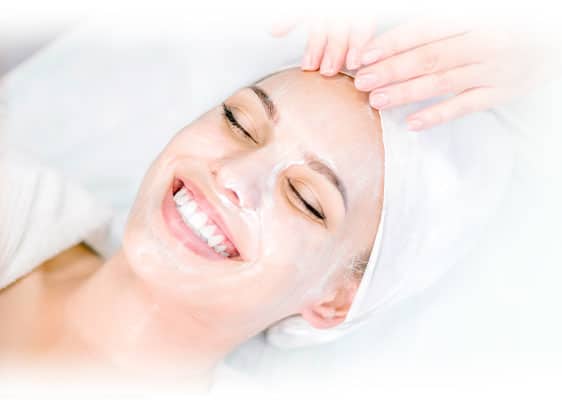CHEMICAL PEEL
Used in facial aesthetic medicine, it is an exfoliation treatment that consists of applying a corrosive chemical substance on the skin to achieve a limited and controlled destruction of the epidermis and dermis to cause a regeneration of the destroyed layers, stimulating the underlying layers.
The application of a chemical peel, which can be a glycolic acid peel or a salicylic acid peel, will vary according to the needs of the skin, and the medical specialist will determine which type of peel to use.
The medical peel is a non-surgical treatment that restores the luminosity and smoothness of the skin. With a facial medical peel we manage, after several sessions, to remove marks from our face such as acne, scars, and blemishes. It also serves to remove wrinkles.

What is a chemical peel and what is it for?
Peeling treatment (chemical peel) is a technique used to increase collagen, reduce dark spots, improve texture and overall appearance of the skin by applying specific chemical solution that targets problem areas.
Sometimes it helps to give a little boost to natural processes. Human skin continually exfoliates, shedding dead cells and replacing them. But it does not always do so as quickly as we would like. That is when treatments like chemical peels can speed up the process.
Periodic exfoliation of the skin helps stimulate cellular activity and can be used to treat a variety of skin problems: from age spots to acne, enlarged pores and pre-cancerous growths. At Sants Institut de Barcelona we offer peeling treatments that exfoliate either lightly, moderately, or aggressively, depending on the chemical used.
What is a chemical peel?
Most people do not think of their skin as an organ, but it is, the largest organ in the human body. Our skin is made up of three layers: the epidermis, the dermis, and the fat layer. Chemical peels deal mainly with the epidermis, blistering the top layer, but can also penetrate the dermis layer. The skin's surface loosens and eventually sloughs off, allowing new, unblemished skin to take the place of old, dead, damaged cells. Chemical peels are an easy, non-invasive option for skin rejuvenation. Cleopatra was an early advocate of chemical peels. She used sour milk, which contains lactic acid, as an exfoliating agent. The Romans also used tartaric acid found in grapes.
What skin problems can be treated with chemical peels?
Chemical peels do not treat deep facial lines and cannot tighten loose, sagging skin. But they are excellent for fixing these skin problems:
- Sun damage
- Fine lines and wrinkles
- Pigmentation problems
- Age spots
- Acne and acne scars
- Freckles
- Skin blemishes
The information provided on the website does not replace but rather complements the relationship between the health professional and their patient or visitor and in case of doubt you should consult your reference health professional.
 English
English  Español
Español 